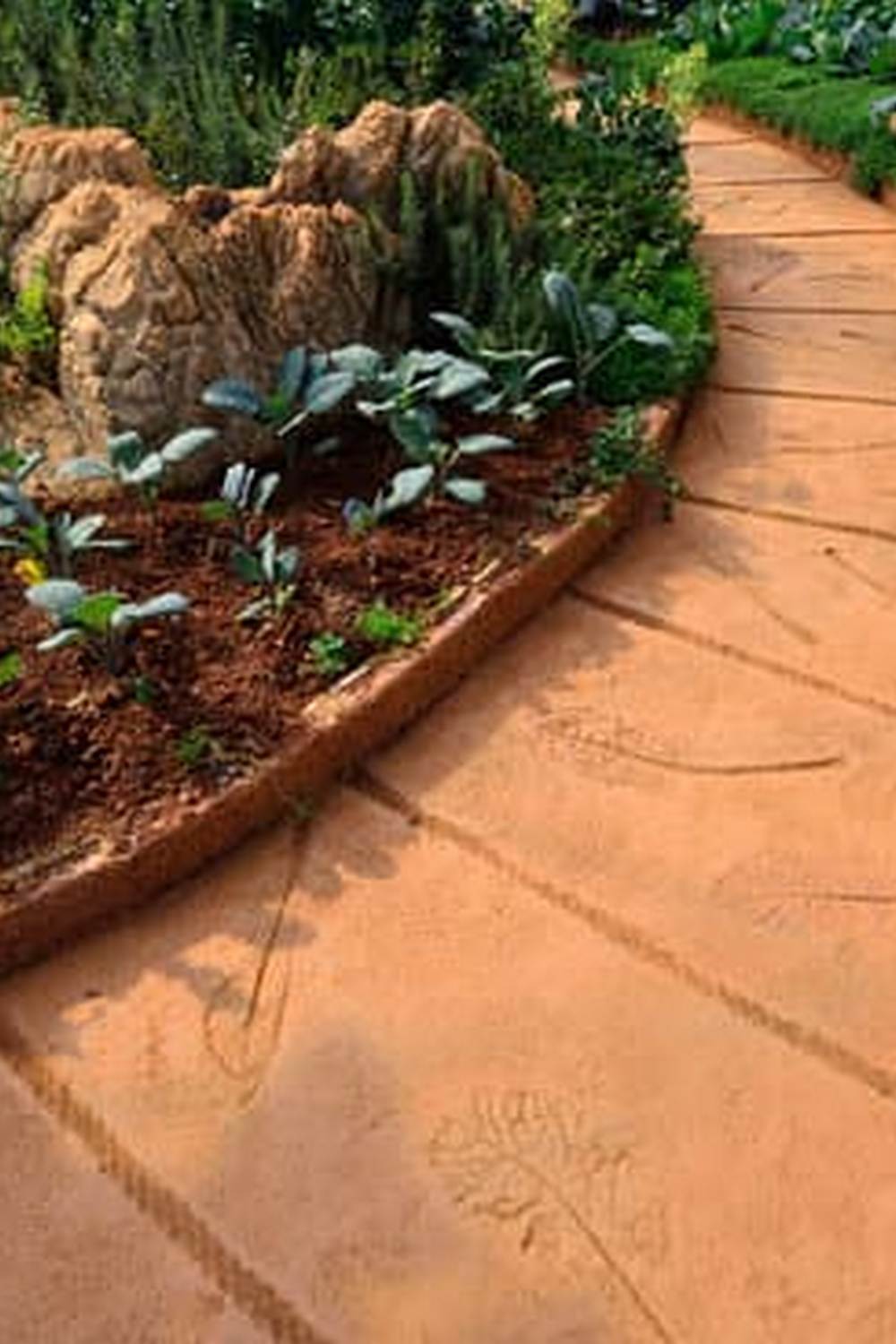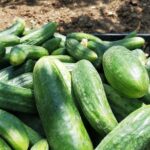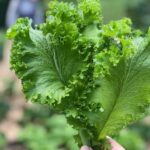Are you interested in starting a vegetable garden in Utah? Vegetable gardening in Utah presents unique challenges and opportunities due to the state’s specific climate and seasonal considerations. From understanding the impact of Utah’s climate on gardening to learning about the best vegetables to grow and effective pest management, this introductory section will provide an overview of what you can expect when embarking on a vegetable gardening journey in Utah.
Utah’s climate and seasonal considerations greatly impact vegetable gardening, making it essential for gardeners to have a good understanding of the state’s weather patterns and growing seasons. With a focus on soil preparation, irrigation strategies, and ways to extend the growing season, this article will guide you through these key aspects of successful vegetable gardening in Utah.
In addition to exploring the challenges posed by Utah’s climate, we will also discuss the numerous opportunities for successful vegetable gardening. By connecting with local resources, garden clubs, and extension services, aspiring gardeners can access valuable support and information to help them thrive in their vegetable gardening endeavors.
Whether you’re new to gardening or looking to enhance your existing skills, this article aims to equip you with the knowledge and resources needed for a successful vegetable garden in Utah.
Climate and Seasonal Considerations
Utah’s climate presents unique challenges and opportunities for vegetable gardening. Understanding the specific climate and seasonal considerations is crucial for successful vegetable cultivation in the state. With hot, dry summers and cold winters, Utah’s climate plays a significant role in determining which vegetables thrive and the best practices for growing them.
- Utah’s Climate: The state experiences a semi-arid to arid climate with hot summers and cold winters. The varying elevations also contribute to diverse microclimates within the state, impacting temperature and precipitation levels.
- Seasonal Considerations: Utah’s short growing season, typically from late spring to early fall, requires careful planning and management to maximize vegetable production. Frost dates in spring and fall also affect planting schedules and crop selection.
- Impact on Vegetable Gardening: The dry climate in Utah means that irrigation is essential for vegetable gardens, while the temperature fluctuations throughout the year influence which vegetables are suitable for cultivation.
Utah’s climate can be both challenging and rewarding for vegetable gardening. By understanding the specific climate and seasonal considerations, gardeners can adapt their methods to create thriving vegetable gardens despite the climatic conditions. With proper planning and strategic plant selection, successful vegetable gardening in Utah is achievable.
Best Vegetables to Grow in Utah
When it comes to vegetable gardening in Utah, it’s essential to choose the right vegetables that can thrive in the state’s specific conditions. The climate in Utah varies greatly depending on the region, with some areas experiencing hot, arid summers and others having cooler temperatures due to higher elevation. Because of these differences, selecting the best vegetables to grow is crucial for a successful garden.
One of the most important factors to consider when choosing vegetables for a Utah garden is the length of the growing season. With a relatively short growing season compared to other states, it’s essential to select vegetables that can mature quickly and tolerate temperature fluctuations. Some of the best vegetables for Utah gardens include tomatoes, peppers, cucumbers, zucchinis, and various varieties of leafy greens like spinach and lettuce.
In addition to selecting quick-maturing vegetables, it’s also important to consider water needs and drought tolerance. Utah has a dry climate with limited irrigation resources in some areas. Therefore, choosing drought-resistant vegetables such as beans, peas, and root crops like carrots and radishes can be beneficial for vegetable gardening in Utah.
| Vegetable | Recommended Varieties |
|---|---|
| Tomatoes | Roma, Early Girl, Celebrity |
| Peppers | Jalapeno, Anaheim, Bell peppers |
| Cucumbers | Bush Champion, Marketmore 76 |
Soil Preparation and Maintenance
Utah’s unique climate presents both challenges and opportunities for vegetable gardening. One of the key factors to consider when starting a vegetable garden in Utah is soil preparation and maintenance. The state’s dry climate and varying soil compositions require specific attention to ensure a successful harvest.
When preparing the soil for vegetable gardening in Utah, it is important to start with a soil test. This will provide valuable information about the pH level, nutrient content, and overall quality of the soil. Based on the results of the soil test, amendments such as compost, organic matter, or fertilizers can be added to improve soil fertility and structure.
In addition to amendments, proper irrigation is essential for maintaining soil quality in Utah’s arid environment. Drip irrigation systems are highly recommended for vegetable gardening in Utah as they deliver water directly to the root zone, reducing water waste and minimizing evaporation. Mulching is also beneficial for retaining soil moisture and regulating temperature fluctuations, especially during Utah’s hot summers.
Furthermore, crop rotation is an effective method for maintaining soil health and preventing nutrient depletion. By rotating crops each season, different nutrients are utilized by different plants, reducing the risk of depletion. Additionally, cover cropping during fallow periods can help improve soil structure and prevent erosion.
When it comes to successful vegetable gardening in Utah, proper soil preparation and maintenance are crucial factors that contribute to a bountiful harvest.
| Soil Preparation Tips | Maintenance Strategies |
|---|---|
| Conduct a soil test | Implement drip irrigation systems |
| Add organic matter or fertilizers based on soil test results | Use mulch to retain moisture and regulate temperature |
| Practice crop rotation | Utilize cover cropping during fallow periods |
Watering and Irrigation
In a state like Utah, where the climate is primarily arid and dry, efficient watering and irrigation practices are crucial for successful vegetable gardening. Without proper attention to these essential tasks, vegetables may struggle to thrive in the harsh environmental conditions. Fortunately, there are several strategies that can be employed to ensure that your garden receives the water it needs without waste.
Drip Irrigation Systems
One of the most efficient ways to water a vegetable garden in Utah is through the use of drip irrigation systems. These systems deliver slow and consistent amounts of water directly to the base of each plant, minimizing evaporation and ensuring that the roots receive adequate moisture. Drip irrigation also helps to prevent water from being wasted on non-vegetative parts of the garden, such as walkways or spaces between plants.
Mulching
Another effective strategy for conserving water and maintaining soil moisture in a Utah vegetable garden is through mulching. Applying a layer of organic mulch around plants helps to reduce evaporation from the soil surface, keeping it moist for longer periods. Mulch also helps to suppress weed growth, which can compete with vegetables for water and nutrients.
Timing and Frequency
Understanding when and how often to water vegetables in Utah is vital for their overall health and productivity. It’s essential to water deeply but infrequently, encouraging plant roots to grow deeper into the soil in search of moisture. Early morning or late evening watering is ideal to minimize evaporation, while avoiding midday watering when temperatures are highest.
By implementing these watering and irrigation strategies tailored specifically for Utah’s dry climate, vegetable gardeners can optimize their water usage while promoting healthy growth and abundant harvests. It’s important to adapt these techniques according to specific soil types, individual plant needs, and local weather patterns throughout the growing season.
Pest and Disease Management
One of the primary challenges when it comes to vegetable gardening in Utah is dealing with common pests and diseases that can affect plant health and yield. Insects such as aphids, spider mites, and cabbage worms are known to cause damage to vegetable crops, while diseases like powdery mildew and blossom end rot can also take a toll on plants. Understanding these common pests and diseases is essential for effective management in vegetable gardens.
To effectively manage pests in your Utah vegetable garden, it’s important to practice regular inspection of plants for early detection of any signs of infestation. Handpicking larger insects such as caterpillars can be an effective method, while using insecticidal soaps or neem oil can control smaller pests like aphids. Additionally, implementing companion planting techniques can help deter certain pests, as some plants naturally repel insects.
When it comes to disease management, proper watering practices play a significant role in preventing issues such as powdery mildew and blossom end rot. Watering at the base of plants instead of overhead helps minimize moisture on leaves, reducing the risk of fungal diseases. Using mulch also aids in maintaining consistent soil moisture levels and reduces the spread of soil-borne diseases.
Extending the Growing Season
One of the key challenges of vegetable gardening in Utah is the relatively short growing season due to its high elevation and cooler temperatures. However, with the use of cold frames and row covers, gardeners can effectively extend the growing season and maximize their vegetable production.
Cold frames are essentially enclosed beds with transparent covers that capture solar energy and provide a warm, sheltered environment for plants. They can be used to start seedlings earlier in the spring or protect sensitive plants from frost in the fall.
Another useful technique for extending the growing season in Utah is the use of row covers. These lightweight, breathable fabrics can be placed directly over garden rows to provide protection from frost and wind while also promoting healthy plant growth. By employing these techniques, Utah gardeners can not only lengthen their growing season but also safeguard their crops from temperature fluctuations and harsh weather conditions.
Utilizing Greenhouses for Year-Round Vegetable Production
In addition to cold frames and row covers, greenhouses are another valuable tool for extending the growing season in Utah. With a greenhouse, gardeners have greater control over environmental factors such as temperature, humidity, and light exposure, allowing them to cultivate vegetables throughout the year. Greenhouses come in various sizes and designs, from small hobby structures to larger commercial operations, making them a versatile option for both amateur and experienced vegetable gardeners in Utah.
By utilizing a greenhouse, growers can start seeds earlier in the spring, protect tender plants during cold spells, and even continue producing vegetables well into the winter months. This extended growing season not only increases overall yields but also provides a continuous supply of fresh produce for household consumption or local markets. With proper planning and management, greenhouses offer Utah gardeners an effective means of overcoming climatic limitations and enhancing their vegetable gardening endeavors.
Succession planting is another strategy that can help Utah vegetable gardeners extend their growing season by ensuring a continuous supply of fresh produce throughout the year. By carefully scheduling successive plantings of different vegetable crops at timed intervals, growers can take advantage of different seasonal conditions and harvest multiple crops from the same plot of land within one growing season. This approach allows for efficient use of space and resources while optimizing productivity.
Moreover,the initial
Community Resources and Support
To excel in vegetable gardening in Utah, it is essential to connect with local resources, garden clubs, and extension services that can provide valuable support and guidance. Utah’s unique climate and soil conditions require specific knowledge and expertise, which these resources can offer to both novice and experienced gardeners.
Local resources such as gardening centers and nurseries can provide information on the best vegetable varieties for Utah’s climate, as well as recommendations for soil preparation and maintenance. Garden clubs are also excellent sources of support, offering a community of like-minded individuals who share their experiences and expertise in vegetable gardening in Utah. These clubs often host workshops, seminars, and events that provide opportunities to learn new techniques and exchange tips with other members.
Furthermore, Utah State University Extension Services offer a wealth of research-based information and educational programs tailored to the specific needs of vegetable gardening in Utah. Their experts can provide guidance on pest and disease management, efficient watering techniques, and extending the growing season.
Additionally, they may offer soil testing services to help gardeners understand the unique composition of their soil and make necessary adjustments for successful vegetable gardening in Utah. By taking advantage of these community resources and support systems, aspiring gardeners can benefit from the collective wisdom and experience of those who understand the ins and outs of vegetable gardening in Utah.
Conclusion
In conclusion, vegetable gardening in Utah presents a unique set of challenges and opportunities that require careful consideration and planning. The state’s climate and seasonal variations play a significant role in determining which vegetables are best suited for successful cultivation. Understanding the soil quality, efficient watering techniques, and effective pest and disease management are essential components of a thriving vegetable garden in Utah.
Despite these challenges, there are numerous vegetables that thrive in Utah’s specific conditions, such as tomatoes, peppers, squash, and leafy greens. By employing proper soil preparation and maintenance, implementing efficient watering and irrigation strategies, and utilizing techniques for extending the growing season, gardeners can maximize their vegetable production in this arid climate. Additionally, tapping into community resources such as local garden clubs and extension services can provide valuable support and guidance for those venturing into vegetable gardening in Utah.
Overall, embarking on a vegetable gardening journey in Utah can be a rewarding experience for both seasoned gardeners and beginners alike. With careful planning, dedication to soil preparation and maintenance, utilization of community resources for support, and implementation of best practices for pest and disease management, individuals can enjoy an abundant harvest from their own backyard gardens.
So whether you’re an experienced gardener or just starting out with your first plot of land, consider diving into the world of vegetable gardening in Utah – it’s an adventure well worth undertaking.
Frequently Asked Questions
When Should I Start a Vegetable Garden in Utah?
The best time to start a vegetable garden in Utah is typically in late April or early May, once the threat of frost has passed. This allows for a longer growing season before the first frost in the fall.
What Is the Easiest Vegetable to Grow in Utah?
One of the easiest vegetables to grow in Utah is the tomato. They thrive in warm, sunny conditions and with proper care, can produce a bountiful harvest. Other easy-to-grow options include zucchini, lettuce, and spinach.
Is Utah Good for Gardening?
Yes, Utah can be an excellent place for gardening. While the climate varies across the state, many areas have warm summers and plenty of sunlight, which are ideal conditions for growing a wide variety of vegetables. Additionally, there are resources and communities that can provide support and guidance for gardening success.

If you’re looking to get into vegetable gardening, or are just looking for some tips on how to make your current garden better, then you’ve come to the right place! My name is Ethel and I have been gardening for years. In this blog, I’m going to share with you some of my best tips on how to create a successful vegetable garden.





